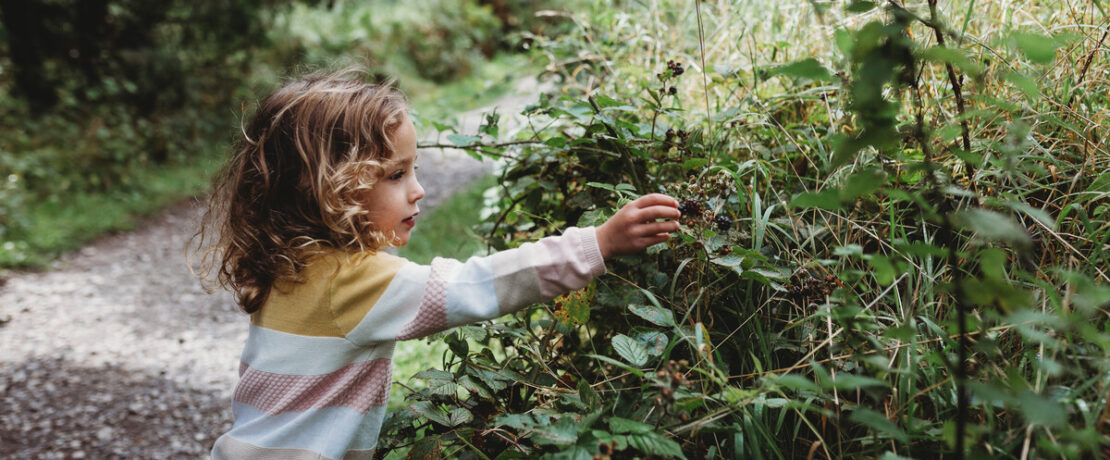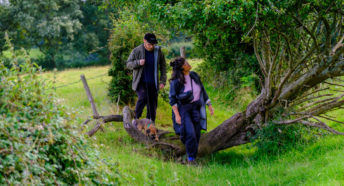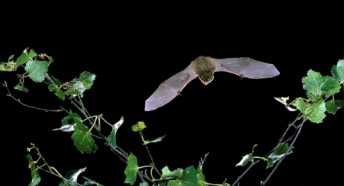Coming to the countryside near you: wildlife in August
August arrives and the summer holidays are in full swing. Many people head to the seaside, cooling off in the ocean, where water temperatures are reaching their peak in the UK.
The blackberries and sloes are beginning to fatten and darken with juice, while apple tree branches grow heavier under ripening fruit. The dawn chorus has quietened, replaced with the gentle chirping of male crickets hoping to attract a mate. Nightingales, nightjars and cuckoos begin to leave for warmer climes, just as wading birds such as knots and dunlins alight on the coastline – they will autumn and winter on the estuaries, eating shellfish, insects and worms. Read on to find out about the wildlife you can discover in the countryside in August.
Cinnabar moth
The abundance of wildflowers during the summer months attract an array of striking red and black moths, including seven species of burnets and the cinnabar moth. The cinnabar moth has red hindwings with black forewings that have two red stripes and two red spots.
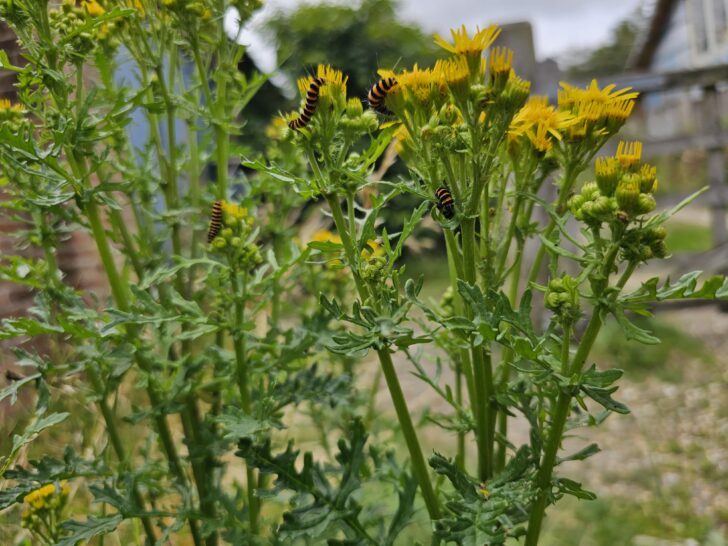
These medium-sized moths rely heavily on common ragwort, which starts blooming with bright yellow flowers from July. The moths lay their eggs on the plants and the caterpillars feed on the ragwort after hatching, taking on the plant’s poison, and becoming toxic themselves. But while the plant’s toxicity is beneficial to the caterpillars, which are banded in black and yellow to warn predators of their poisonous status, it has a bad reputation. Dangerous to horses and livestock, ragwort is demonised and often removed, and the increasing loss of this vital food plant is having a negative impact on cinnabar moths. Leaving ragwort to grow in places where it is unlikely to be eaten, such as road verges and gardens, means more cinnabar moths will be able to lay their eggs and help secure their future.
Heather
Across heathland and moorland, heather is blooming. It started in July, maybe as early as June in some places, but the show really kicks off in August. Britain’s moors have inspired many great writers such as RD Blackmore and Emily Bronte, and whilst the habitat can be captivating at any time of year, late summer is exquisite, as pink, purple and occasionally white flowers decorate coarse and woody stems.
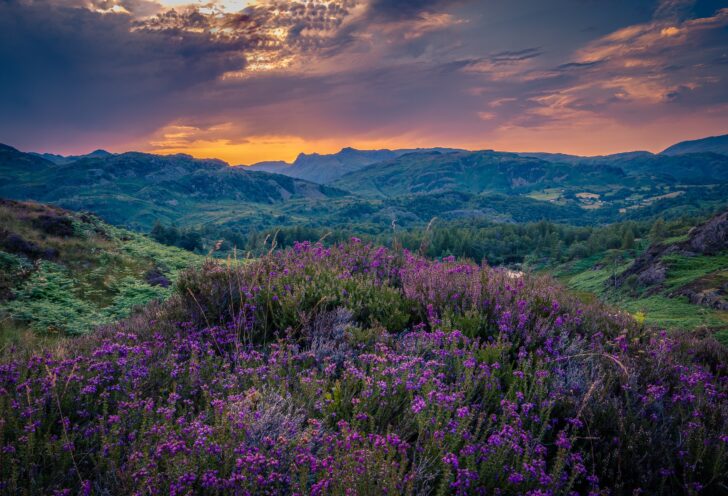
There are three types of wild heather in Britain: ling, bell and cross-leaved. Heather is tough, preferring acidic soils, but each of the three types has different habitat specifications. It is vital to nature; when in full bloom, the plants put on an intense display, attracting a plethora of invertebrates. The bushy stems offer shelter to ground-nesting birds but also support wood mice, field voles and adders. Heather was once commonly used by humans for building fires, as thatch or even as brooms. By October the flowers will have died, turning brown, leaving the ‘bleak’ reputation the plants tend to retain in the colder months, so now is the perfect time to get out and enjoy this annual spectacle.
Slow worm
The slow worm is arguably Britain’s most unique reptile. It has the appearance of a snake but is actually a legless lizard. Slow worms tend to be shorter, smoother, shinier and thicker ‘necked’ than our native snakes, they also blink, unlike snakes which have no eyelids. They are grey in colour and some males have distinctive blue markings whereas females have a stripe down the middle of their backs.
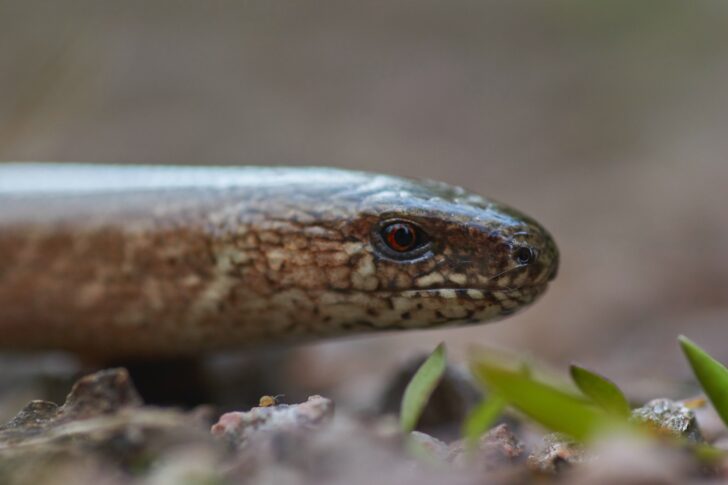
Slow worms are also the most frequently spotted lizard in the UK. and your chances of spotting one is fairly high if you look in the right spaces or set up their favoured habitat. They will happily inhabit your garden compost heap or allotment space – and in August and September, females will be giving birth to up to eight babies. Unlike some other reptiles, they don’t lay eggs externally, instead, they are ‘ovoviviparous’ meaning they lay and hatch eggs internally and give birth to live young.
To attract slow worms to your space, a shelter that retains heat is their favourite. Grass composts, piles of logs or stones, or you could even try laying down sheets of rubber or corrugated iron. It’s okay to take a peek at slow worms, but if you do spot one, replace any covering straight away and leave them be.
The slow worms will be around for a few more months before they find a place to burrow down beneath leaf piles, under tree roots or even in your compost heap to hibernate for the winter months.
House sparrow
In my parents’ garden in Falmouth, a large clump of ivy bursts into life every morning, with the sounds of chirping and squabbling, and one by one, tens of male and female house sparrows emerge from beneath the vines to look for food. They roost overnight together, tucking into the crevices of the wall or inside the dense foliage, but it may also be where they nest.
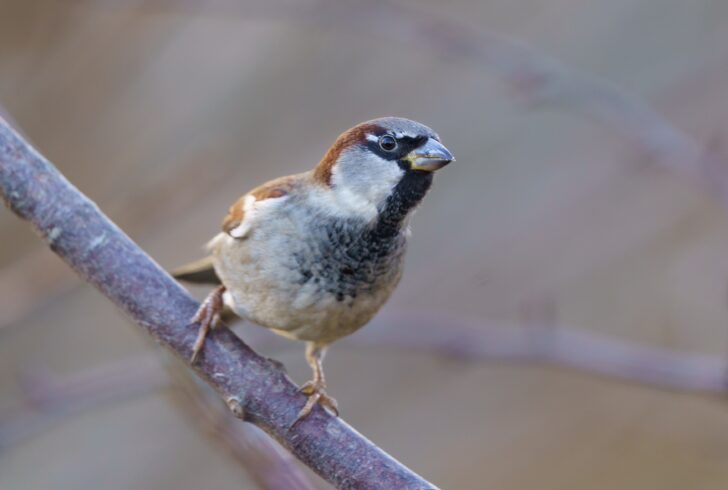
House sparrows breed from April to August, although sometimes they will extend the season outside of this. Now is a great time to watch the fledglings as they enjoy their first foray into the world, looking for seeds, berries, nuts, aphids and caterpillars.
House sparrows were once very common, but their numbers were steadily declining, as much as over 70% in 30 years, leaving them red-listed. There has been a recent uplift in populations, but as we aren’t completely sure about what is affecting them, it’s hard to say why these changes have occurred. Changes to agricultural practices and food availability is most likely to blame. You can help out by providing a good quality bird seed in your garden and the right sort of nest boxes so they have something to eat and a place to stay.
About the author
Alexandra Pearce-Broomhead is a writer and occasional Guardian Country Diarist from Cornwall. She writes about nature and place, and the human relationship with both. Her work has also been featured on BBC Wildlife and BBC Countryfile.
